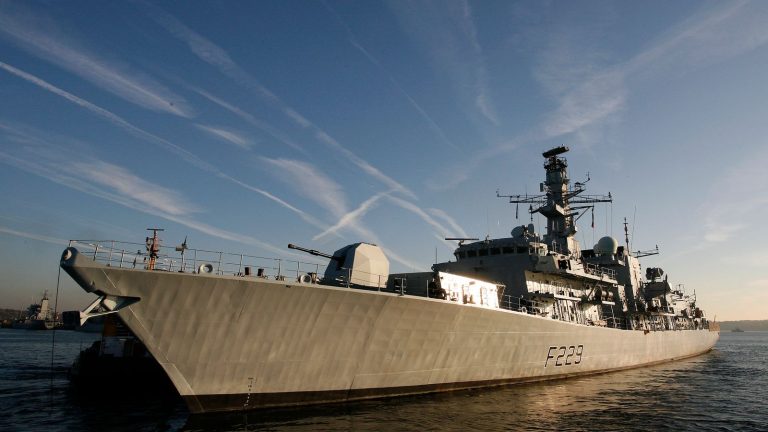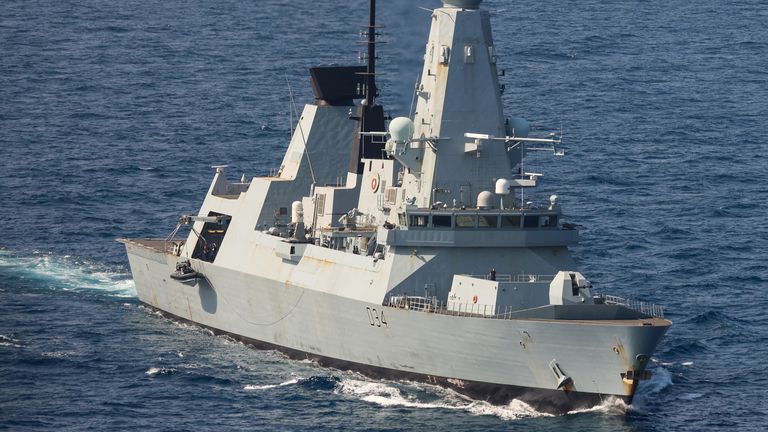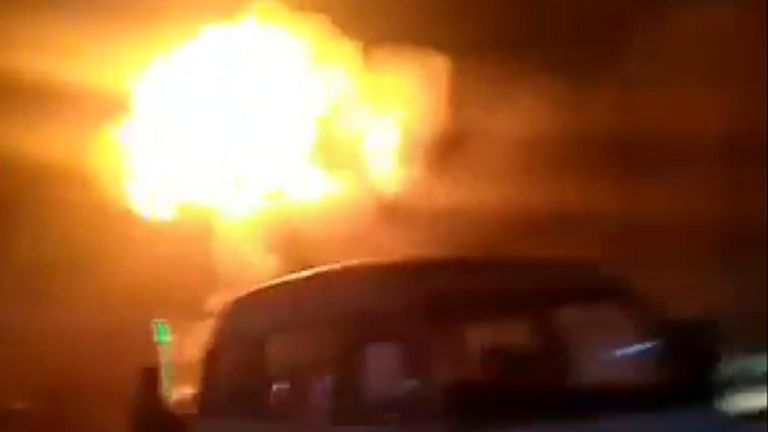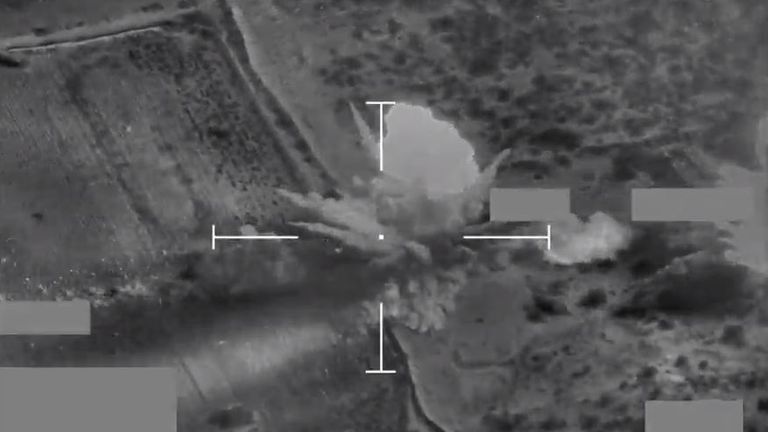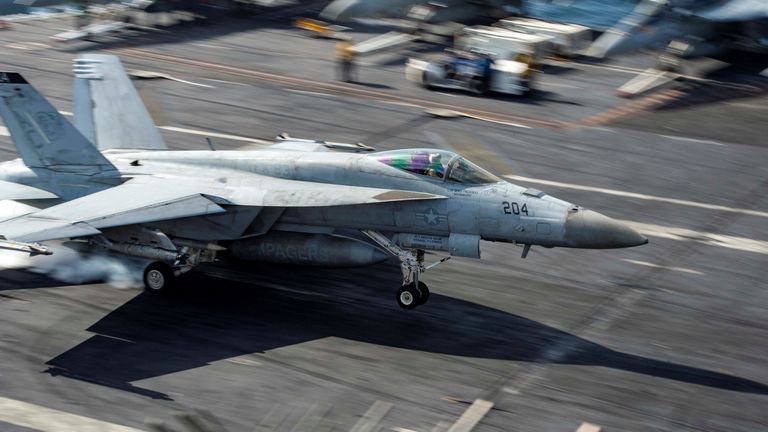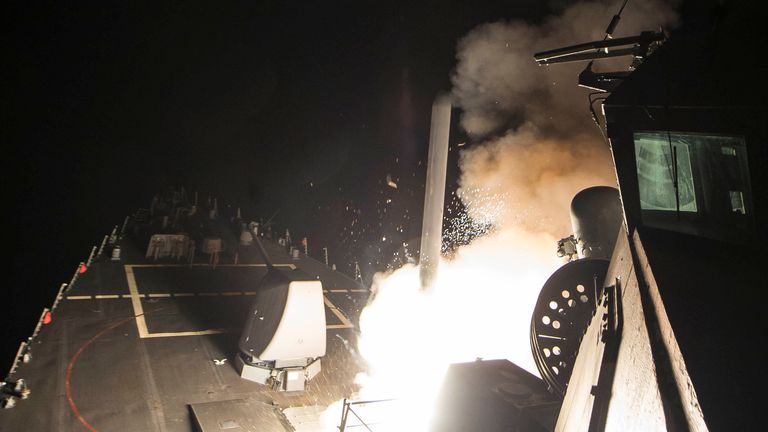British forces have joined the US in targeting more sites used by Iranian-backed Houthi fighters in Yemen.
The air strikes came in response to Houthi drone and missile attacks on commercial ships, which began after the start of the war between Israel and Hamas.
The Yemeni rebel group declared its support for Hamas in Gaza and said it would target ships heading to Israel.
In the wake of Latest hitsSky News provides a glimpse into the military equipment and weapons at the UK and America's disposal in the region.
Follow the live broadcast: The Middle East Crisis
Britain
HMS Diamond
The Type 45 destroyer has already participated – Shooting down drones and missiles launched by the Houthis Against civilian ships in the Red Sea.
The Diamond's sleek lines are designed for stealth at sea, where they appear virtually invisible on enemy radar.
HMS Diamond, which has advanced military sensors to detect and track multiple targets, is equipped with 48 Sea Viper missiles – long-range precision weapons capable of reaching hypersonic speeds of up to Mach 4.5 and costing more than £1 million each. .
The weapon system can fire eight missiles in less than 10 seconds and guide up to 16 missiles simultaneously.
Other weapons include a 4.5-inch main gun, a 30 mm cannon, 20 mm rapid-fire Gatling cannons, Harpoon anti-ship missiles, and an anti-torpedo defense system.
The destroyer, which can reach a speed of 30 knots and has a range of 7,000 nautical miles, is equipped with the signature Sampson radar system – a large spherical surveillance device that can detect and track threats from more than 250 miles away, as well as direct friendly missiles. .
Unlike conventional radars, it can perform several functions simultaneously, has enormous range and accuracy, and is immune to enemy jamming.
It also has a flight deck for one helicopter.
HMS Lancaster
With a maximum speed of 28 knots and a range of 7,800 nautical miles, the Type 23 frigate is the core of the Royal Navy's frontline fleet due to its overall operational effectiveness.
Originally designed for anti-submarine warfare during the Cold War, its technology and weapons have since been updated to deal with almost any threat.
More about the Yemen strikes:
Analysis: A busy shipping lane can't be the Wild West
Analysis: Strikes on Yemen may lead to a regional war
Who are the Houthis?
The battleship's 4.5-inch gun could provide artillery bombardment of shore targets, firing up to 24 high-explosive shells per minute (each weighing 40 kg) at a distance of up to 18 miles.
It is also equipped with long-range Harpoon anti-ship missiles and the advanced Sea Ceptor air defense system, which can guard an area of 500 square miles and engage multiple targets at the same time.
HMS Richmond, another Type 23 frigate, is also on its way to the region.
RAF Hurricanes
Although the four multi-mission fighter aircraft are not based in the Gulf, they fly from Cyprus and have been used to carry out strikes against Houthi military targets in Yemen.
The long-range mission was made possible by the Voyager air refueling tanker.
Capable of reaching a maximum speed of Mach 1.8, the FGR4 Typhoon has a maximum altitude of 55,000 feet.
With the brakes off, it can reach Mach 1.5 at 35,000 feet in less than 2 minutes and 30 seconds.
It is armed with a 27 mm Mauser cannon and is capable of firing a range of precision-guided missiles and bombs.
Paveway IV guided bombs
The highly accurate weapons used by Typhoon aircraft in attacks on Houthi facilities are capable of destroying the majority of targets while minimizing collateral damage.
The RAF has been used operationally since 2008.
Costing around £30,000 each and weighing 226kg, the Paveway consists of four main parts – the guidance system at the front, a 500lb warhead in the middle (which can penetrate concrete), and at the rear, the tail section guides the bomb, with a smart fuze to control How to blow it up.
GPS is one way the bomb can be guided to its target, but as a dual-mode weapon, it can also be guided using lasers.
United State
USS Dwight D. Eisenhower
The nuclear-powered Nimitz-class aircraft carrier was sent to the region “to deter hostile actions against Israel or any efforts to expand this war following the Hamas attack on Israel,” according to US Defense Secretary Lloyd Austin.
Described by the US Navy as “the finest five-star aircraft carrier,” the ship is 1,092 feet long and has a top speed of more than 30 knots.
Its personnel number is about 5,000, and it can carry 60 aircraft in the region.
It is accompanied by a carrier strike group, which includes the USS Philippine Sea, the guided missile cruiser USS Gravely and the USS Mason.
The destroyer USS Labone also operates in the Red Sea.
Warships have an array of weapons including surface-to-air missiles, guns and close-in weapons systems.
They also have electronic warfare capabilities that can sever links between drones and their controllers on shore.
F/A-18 Super Hornet
The advanced gunship is the US Navy's flagship attack aircraft.
It has been likened to a power tool with different attachments that can be configured for different types of tasks.
Equipped with a 20 mm rotary cannon, it can also carry air-to-air and air-to-surface missiles and a variety of other weapons.
The plane can reach speeds of Mach 1.8, climb to 50,000 feet, and have a range of up to 1,275 nautical miles.
The advanced cockpit system includes a touch screen that provides the pilot with the ability to see, track and target multiple long-range targets.
Tomahawk missiles
The U.S. Navy's low-flying Tomahawk cruise missiles can deliver a 1,000-pound conventional warhead hundreds of miles inland.
Tomahawk missiles are launched from ships or submarines and fly at subsonic speeds on “evasive” or indirect routes that can overcome air defense systems.
The missiles are GPS-guided so they can change targets or trajectories after launch.

